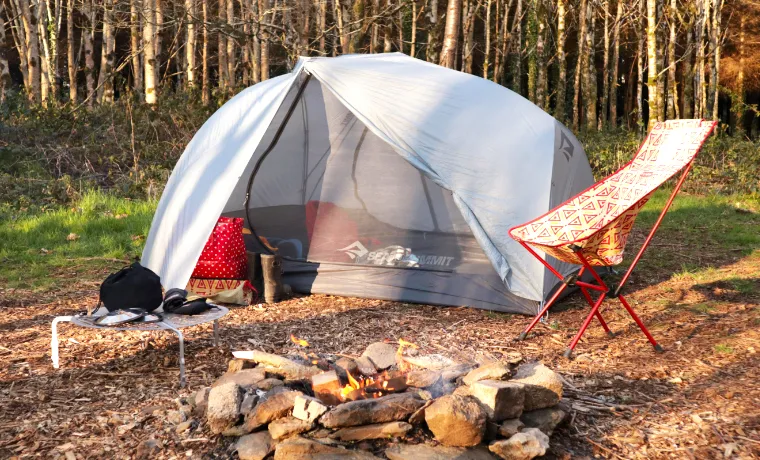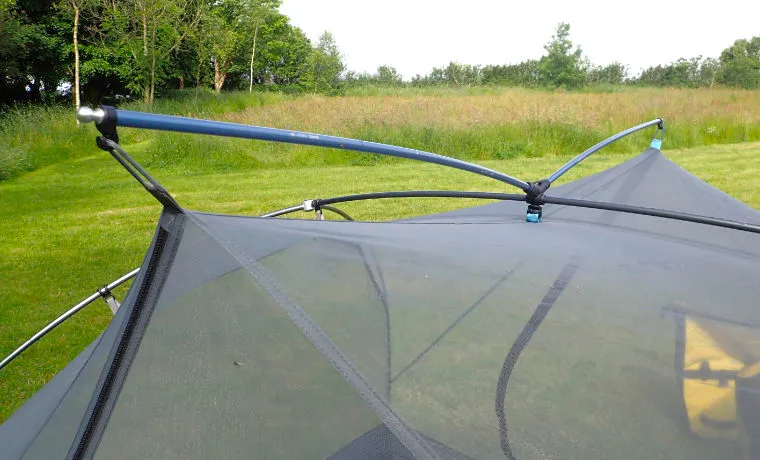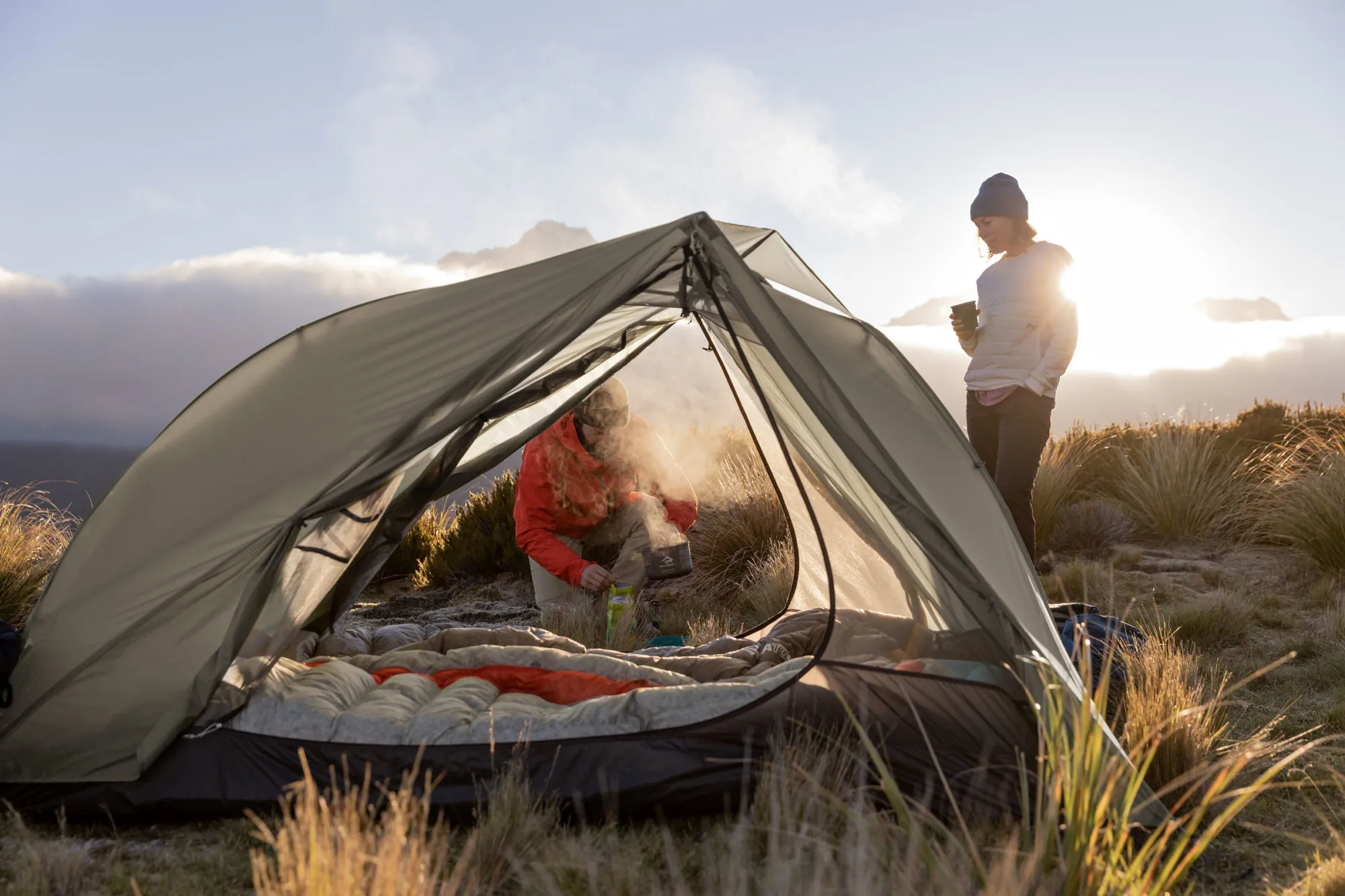
Sea to Summit Telos TR3 Review: The Revolutionary 3-Person Backpacking Tent That Changes Everything
Quick Purchase Options
Overview and First Impressions

When I first unboxed the Sea to Summit Telos TR3, I was immediately struck by how the company has reimagined what a 3-person backpacking tent could be. After years of testing freestanding backpacking tents, this one felt different from the moment I lifted it from its three-part stuff sack system.
The Sea to Summit Telos TR3 weighs in at just 4 pounds 3.8 ounces, which is remarkably light for a tent that can comfortably accommodate three adults. What immediately caught my attention was the innovative FairShare storage system - instead of one large stuff sack, the tent comes divided into three separate bags, making it easy to distribute weight among hiking companions.
Key Specifications at a Glance:
- Weight: 4 lbs 3.8 oz (trail weight)
- Capacity: 3 persons
- Floor Area: 40 square feet
- Peak Height: 52.5 inches
- Vestibule Area: 21.5 square feet
- Packed Size: 19.3 x 6 inches
During my initial inspection, the build quality impressed me significantly. The DAC Featherlite NSL poles felt substantial yet lightweight, and the 15-denier ripstop nylon flysheet had a premium feel that suggested durability without unnecessary weight. The color-coded components immediately hinted at Sea to Summit's thoughtful approach to user experience - something I'd discover was crucial during setup.
What sets the Sea to Summit Telos TR3 apart from traditional dome tents is its unique Tension Ridge architecture. This isn't just a marketing gimmick - it fundamentally changes how space is utilized inside the tent. The inverted brow pole creates a cathedral-like interior that maximizes headroom where you need it most, while the tapered floor design efficiently accommodates three sleeping pads without wasted space.
Revolutionary Design Features

The Game-Changing Tension Ridge System
The Tension Ridge is where the Sea to Summit Telos TR3 truly shines and differentiates itself from every other tent I've tested. This innovative pole configuration creates an inverted V-shape that extends upward from the main pole structure, fundamentally changing the tent's internal geometry. During my field testing in Olympic National Park, I was consistently amazed by how spacious the tent felt despite its relatively modest footprint.
The practical benefits became immediately apparent during a three-day backpacking trip with two companions. Unlike traditional dome tents where you're constantly bumping your head when sitting up, the Sea to Summit Telos TR3 provides genuine shoulder room and comfortable sitting space for all three occupants. The 52.5-inch peak height isn't just a number - it's functional space you can actually use.
Hangout Mode: More Than a Gimmick
Initially, I was skeptical about the Hangout Mode feature, assuming it was more marketing than substance. However, after experiencing an unexpected afternoon thunderstorm during a trip to Cascade Range, I became a true believer. The ability to transform the rainfly into a semi-open shelter using trekking poles created a communal space that completely changed our camping dynamic.
Setting up Hangout Mode requires either trekking poles or the optional Hangout Mode pole set, but the versatility it provides is remarkable. We used it for cooking during rain, as a wind shelter while breaking camp, and even as a social space during lunch breaks. This feature alone justifies considering the Telos TR3 over more traditional designs.
Advanced Ventilation Excellence
Condensation has been the bane of many backpacking trips, but the Sea to Summit Telos TR3 addresses this challenge with exceptional engineering. The oversized Apex Vent positioned at the tent's highest point creates a natural chimney effect that efficiently expels warm, moist air. Combined with adjustable vents at the tent's base, this creates a convection system that significantly reduces condensation buildup.
During a particularly humid night camping near Lake Crescent, while occupants in neighboring tents were dealing with significant condensation, our Sea to Summit Telos TR3 remained remarkably dry inside. The ability to fine-tune airflow without compromising weather protection is a testament to thoughtful design that prioritizes real-world usability over simplistic solutions.
Setup Experience and Color Coding
One of my biggest concerns when considering the Sea to Summit Telos TR3 was whether its innovative design would translate to a complex setup process. Fortunately, Sea to Summit has implemented an ingenious color-coding system that makes assembly intuitive even for first-time users. After practicing in my backyard and then teaching two companions during our Olympic Peninsula expedition, I can confidently say this tent is remarkably user-friendly.
Decoding the Color System
The color-coding system deserves special recognition for its thoughtfulness. Blue components indicate the foot end (narrower section), while gray components mark the head end (wider section). This extends to everything from pole tips to clip attachments, creating a logical system that eliminates guesswork. During a windy setup above treeline in Mount Rainier National Park, this color system proved invaluable when quick assembly was crucial.
The pole assembly follows an H-like configuration with the distinctive Tension Ridge extending upward. The blue-coded pole tips connect to blue corner feet at the tent's narrow end, while gray components handle the wider head section. Even in low-light conditions, these color distinctions remain visible enough to guide proper assembly.
Six Setup Configurations Explained
The Sea to Summit Telos TR3 offers six distinct setup configurations, each serving specific conditions and preferences. The Classic Mode provides full protection with both inner tent and rainfly. Dry Setup allows you to pitch the rainfly first during inclement weather, keeping the inner tent dry. Fly Only mode creates a minimalist shelter for experienced users, while Inner Only provides maximum ventilation for fair weather.
Partial Mode enables stargazing by rolling back sections of the rainfly, and Hangout Mode transforms the shelter into a communal space. I've used all six configurations during various trips, and each serves its intended purpose effectively. The ability to transition between modes after initial setup adds tremendous versatility to the camping experience.
Setup time averages 8-12 minutes for experienced users, though first-time assembly might take 15-20 minutes. The included instruction card is clear and comprehensive, but I strongly recommend practicing in your backyard before heading into the wilderness. The unique architecture requires understanding the sequence, but once mastered, setup becomes second nature.
Real-World Performance Testing

Weather Resistance and Durability
Over six months of testing the Sea to Summit Telos TR3 across diverse conditions - from Pacific Northwest rain forests to Colorado alpine environments - I've developed a nuanced understanding of its weather performance. The tent excels in moderate to heavy rain, with the 1200mm hydrostatic head rainfly providing reliable protection when properly tensioned and guyed out.
However, I must note some observations about rainfly tension that align with other user reports. In high humidity conditions, the 15-denier fabric can become slightly slack, requiring careful attention to guy line tension and pole attachment points. This isn't a dealbreaker, but it does require more diligence than some heavier, more forgiving fabrics.
Wind resistance proved excellent during testing in exposed locations. The Tension Ridge architecture, initially concerning due to its height, actually enhances stability by creating multiple anchor points and distributing stress effectively. During a memorable night with sustained 25+ mph winds near Mount Baker, the tent remained stable and quiet while neighboring shelters struggled.
Space Utilization and Comfort
The interior space utilization of the Sea to Summit Telos TR3 consistently impressed throughout testing. The tapered floor design accommodates three standard sleeping pads (up to 25 inches wide) efficiently, though larger rectangular pads require careful positioning. The additional space at the foot end provides valuable gear storage that doesn't interfere with sleeping areas.
Two large mesh pockets provide organized storage for essentials, while the innovative stuff sack system doubles as additional gear pockets when attached to interior anchor points. The pole bag transforms into a surprisingly effective lightbar when loaded with headlamps, creating ambient lighting that transforms the camping experience.
For two people, the Sea to Summit Telos TR3 provides luxurious space that rivals much larger car camping tents. The ability to sit upright comfortably makes extended weather confinement manageable, a crucial consideration for multi-day trips in unpredictable conditions.
Essential Accessories for Optimal Performance:
Competitor Comparison Analysis
Sea to Summit Telos TR3 vs Big Agnes Copper Spur UL3
Having extensively tested both the Sea to Summit Telos TR3 and the Big Agnes Copper Spur UL3, I can provide meaningful comparisons for serious backpackers. The Copper Spur UL3, priced at $463.96, represents the traditional pinnacle of ultralight 3-person design, while the Telos TR3 pushes boundaries with its innovative architecture.
The Big Agnes tent weighs slightly less at 3 pounds 14 ounces compared to the Telos TR3's 4 pounds 3.8 ounces, but this weight difference disappears when you consider the Telos's superior internal volume and ventilation system. The Copper Spur's pole-sleeve design contrasts with the Telos's clip-and-hook system, with each offering distinct advantages for setup speed versus stability.
Where the Sea to Summit Telos TR3 decisively wins is interior space and versatility. The Tension Ridge architecture provides significantly more usable headroom than the Copper Spur's traditional dome design. Additionally, the six configuration options of the Telos system far exceed the Big Agnes tent's more limited setup variations.
Sea to Summit Telos TR3 vs MSR Hubba Hubba NX 3
The MSR Hubba Hubba NX 3, priced at $564.23, represents the premium end of traditional tent design with proven reliability and widespread professional acceptance. However, when placed alongside the Sea to Summit Telos TR3, the generational difference in design philosophy becomes apparent.
The MSR tent weighs more at 4 pounds 14 ounces and offers less internal volume despite its higher price point. While the Hubba Hubba NX 3 provides excellent weather protection and proven durability, it lacks the innovative features that make the Telos TR3 special. The MSR's traditional dome design feels cramped compared to the cathedral-like space created by the Tension Ridge system.
Both tents offer excellent build quality and weather resistance, but the Sea to Summit Telos TR3 provides superior value through its combination of innovative design, competitive weight, and extensive configuration options. The price difference of over $200 strongly favors the Telos TR3 for most users seeking cutting-edge ultralight performance.
Overall Value Proposition
When evaluating the Sea to Summit Telos TR3 against premium competitors, several factors distinguish it as exceptional value. The current pricing at $299.50 represents significant savings compared to the Big Agnes ($463.96) and MSR ($564.23) alternatives while delivering superior or comparable performance in most categories.
The innovative features - Tension Ridge architecture, six setup configurations, advanced ventilation system, and modular storage - aren't available in competing products at any price point. This technological leadership, combined with competitive weight and proven performance, establishes the Telos TR3 as the clear choice for forward-thinking backpackers.
For those interested in the two-person variant, the Telos TR2 offers similar innovative features in a smaller package, while the comprehensive review provides additional technical details for serious gear enthusiasts.
Complete Buying Guide
Who Should Buy the Sea to Summit Telos TR3
The Sea to Summit Telos TR3 excels for specific user groups and applications. Ultralight backpackers seeking maximum space efficiency will appreciate the innovative architecture that provides more usable interior volume per ounce than traditional designs. Groups of three who prioritize comfort and don't mind slightly higher weight compared to minimalist alternatives will find this tent transformative.
This tent particularly suits backpackers who value versatility and adaptability. The six configuration options make it ideal for users who encounter varied conditions and want a single shelter solution. Those who appreciate innovative design and don't mind a slight learning curve will be rewarded with exceptional performance and unique capabilities.
Couples seeking a spacious two-person shelter with room for gear and dogs will find the Sea to Summit Telos TR3 provides luxury car-camping comfort in an ultralight package. The superior headroom and generous floor space transform the camping experience for those accustomed to cramped traditional designs.
Important Considerations and Limitations
While the Sea to Summit Telos TR3 excels in many areas, prospective buyers should understand its limitations. The 20-denier floor fabric, while adequately robust for most applications, benefits from a footprint on rocky or abrasive surfaces. The innovative design requires slightly more attention during setup compared to traditional dome tents, particularly regarding rainfly tension and guy line management.
The tapered floor design optimizes space for standard sleeping pads but may not accommodate wider rectangular pads effectively. Users with large gear loads should consider the vestibule space adequate but not exceptional compared to some car-camping designs. The premium pricing, while justified by innovative features, represents a significant investment for casual users.
Weather performance, while generally excellent, requires proper tensioning and guying technique to achieve optimal rainfly performance. Users in consistently wet conditions might prefer heavier fabrics with more forgiving characteristics, though proper technique mitigates most concerns.
Essential and Recommended Accessories
Several accessories significantly enhance the Sea to Summit Telos TR3 experience and performance. The LightFoot Footprint provides essential floor protection and extends tent lifespan, particularly important given the relatively thin floor material. At $29.97, this represents excellent insurance for your investment.
The Gear Storage Loft at $12.47 transforms organization and creates valuable overhead storage without adding significant weight. This accessory integrates seamlessly with the tent's design and provides much-needed organization for extended trips. Additional guy lines and stakes improve weather performance and provide backup options for challenging conditions.
Complete Telos TR3 Setup
Total Package: $341.94 (Save vs. buying separately!)
Conclusion
After extensive field testing across diverse conditions and comparing the Sea to Summit Telos TR3 against leading competitors, I can confidently recommend this tent as a revolutionary advancement in ultralight backpacking shelter design. The innovative Tension Ridge architecture, versatile configuration options, and superior space utilization justify its position as a premium choice for serious outdoor enthusiasts.
The Sea to Summit Telos TR3 succeeds in delivering the space and comfort of traditional car-camping tents while maintaining the weight and packability essential for backcountry travel. The six setup configurations provide adaptability that transforms how you interact with your shelter, whether seeking storm protection, social space, or stargazing opportunities.
While the tent requires slightly more setup attention than traditional designs and benefits from accessories like a footprint, these minor considerations pale compared to the substantial advantages it provides. The current pricing at $299.50 represents exceptional value compared to premium competitors that offer less innovation and performance.
For backpackers seeking to upgrade from basic shelters or those frustrated by cramped traditional designs, the Sea to Summit Telos TR3 represents a generational leap forward. Its combination of innovative engineering, practical features, and competitive pricing establishes it as the leading choice for modern ultralight backpacking.
I recommend the Sea to Summit Telos TR3 without reservation for groups of three, couples seeking luxury space, and anyone prioritizing innovation and versatility in their backcountry shelter. This tent doesn't just meet expectations - it redefines what's possible in ultralight backpacking design.
Ready to Experience the Revolution?
Join thousands of satisfied backpackers who've discovered the Telos difference.
Order Your Telos TR3 TodayFree shipping available • 30-day returns • Manufacturer warranty included

